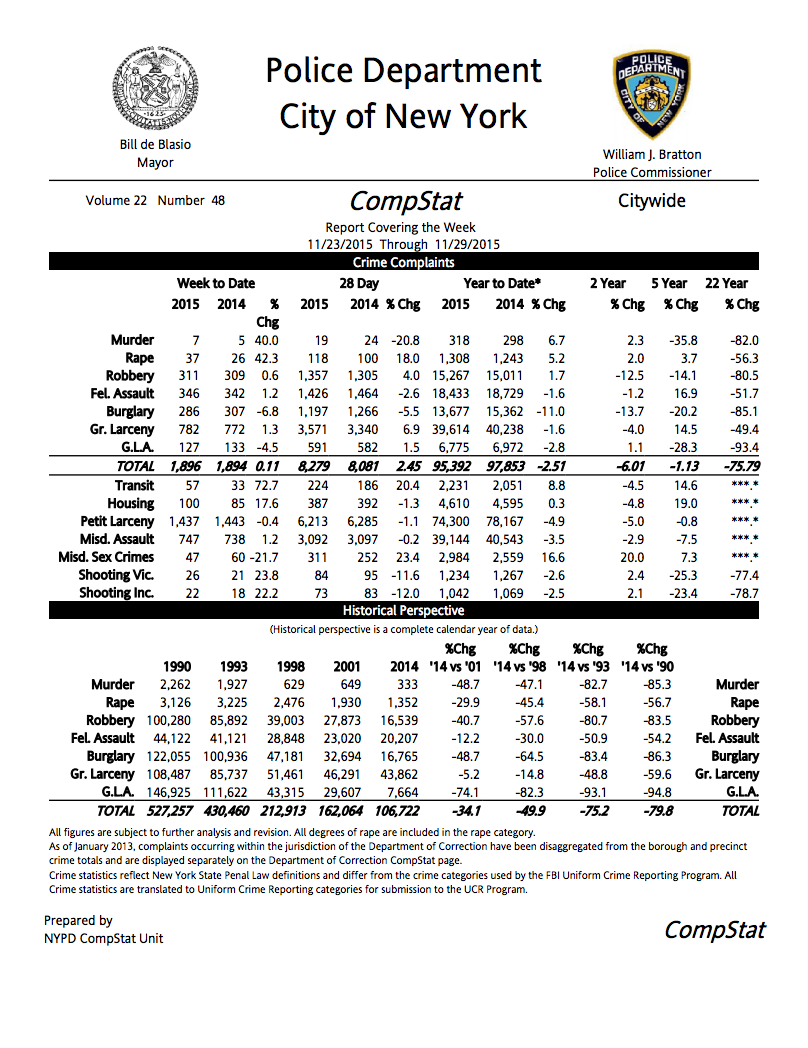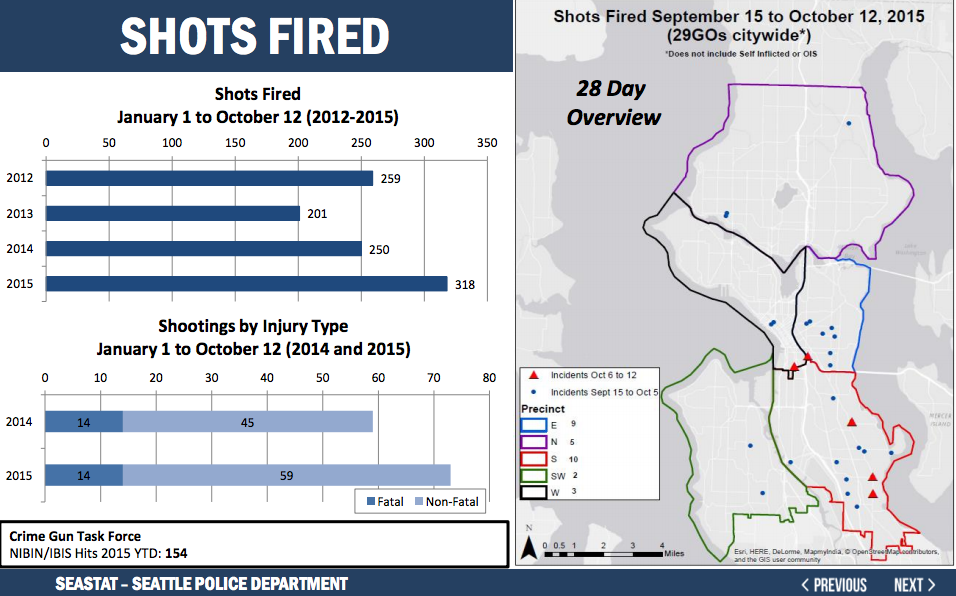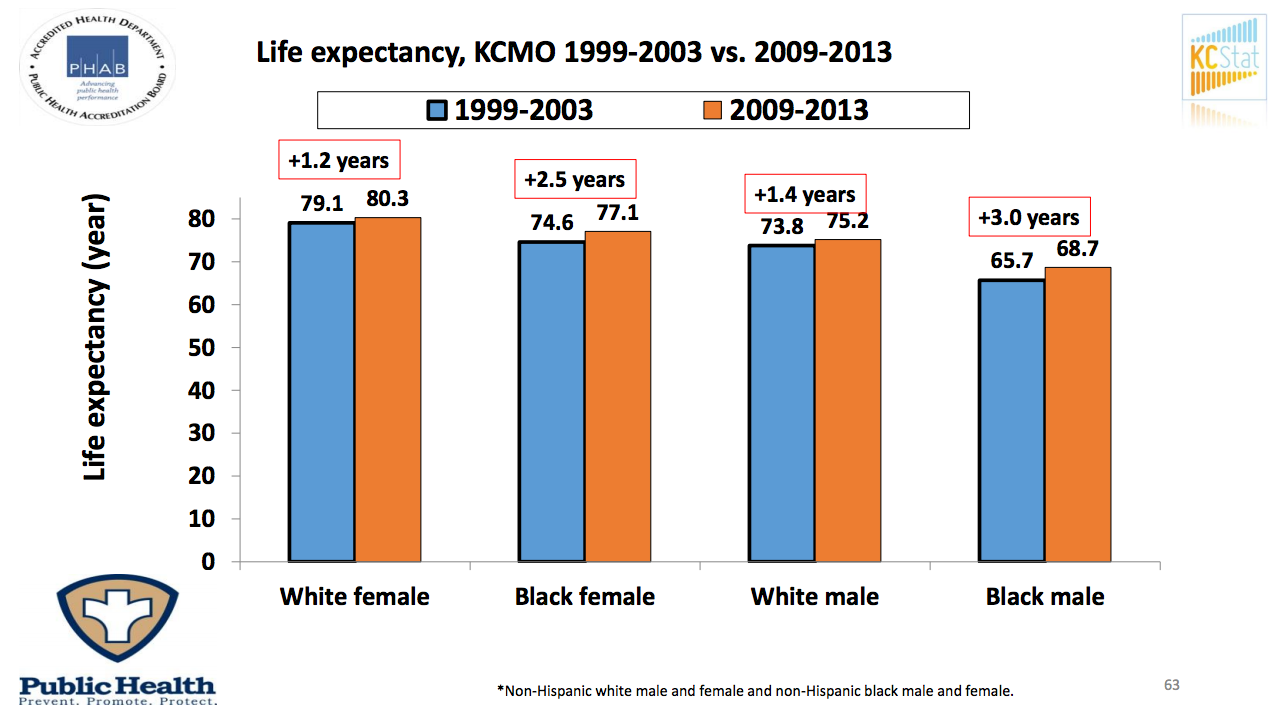Internal Benchmarking
Internal Benchmarking is simply comparing yourself . . . to yourself. If an organization wants to know what success looks like, they should first look to data on what they have been capable of in the past. The most iconic example of internal benchmarking is COMPSTAT.
COMPSTAT is the New York City Police Department's (NYPD) accountability process. It is both a management philosophy and a tool for police department managers to identify spikes in crime using comparative statistics (or internal benchmarking). One of the main features of COMPSTAT is its relentless commitment to benchmarking current performance against the past. In Figure 1 below, which is taken directly from the NYPD website, the department compares crime this week to the same week last year. It also calculates percent changes over the past two, five and 22 years. For additional context, the NYPD provides a historical perspective, comparing current performance to performance in 1990, 1993, 1998, and 2001.
Figure 1

Internal Benchmarking is a very common practice among police departments. SeaStat is the Seattle Police Department's (SPD) accountability process. Like COMPSTAT, it is both a management philosophy and a tool for police department managers to identify spikes in crime using internal benchmarking. One of the main features of SeaStat is its commitment to benchmarking current performance against the past. In Figure 2 below, which is taken directly from the SeaStat website, the department compares the number of shots fired year-to-date in 2015 to the number of shots fired in previous years. It also makes distinctions between fatal and non-fatal shots fired across multiple years.
Figure 2

Public Safety agencies are not the only ones to leveraging internal benchmarking. It is also a very common public health practice. Figure 3 is pulled from Kansas City, Missouri's KCSTAT. It represents an example of a local public health department benchmarking current life expectancy of black and white males and females against their life expectancy in the past. In all cases, life expectancy has increased in Kansas City.
Figure 3
